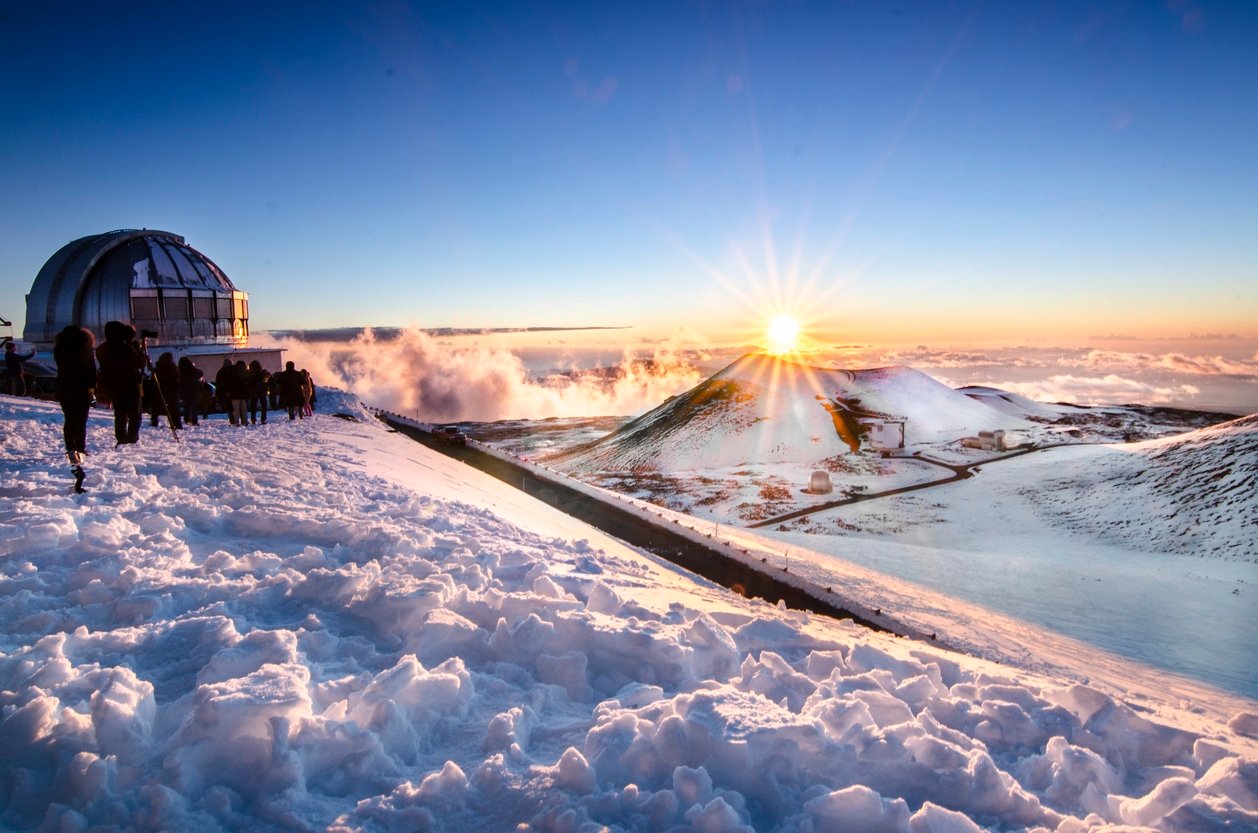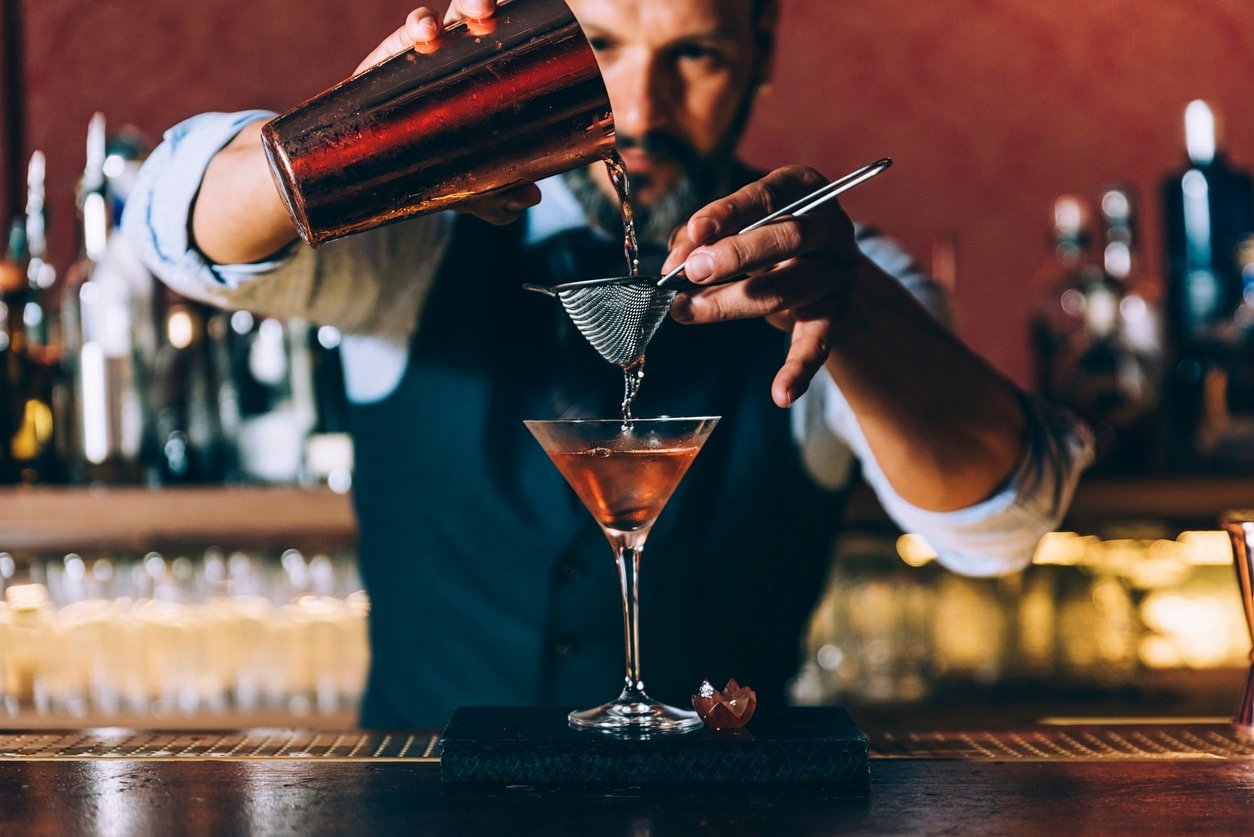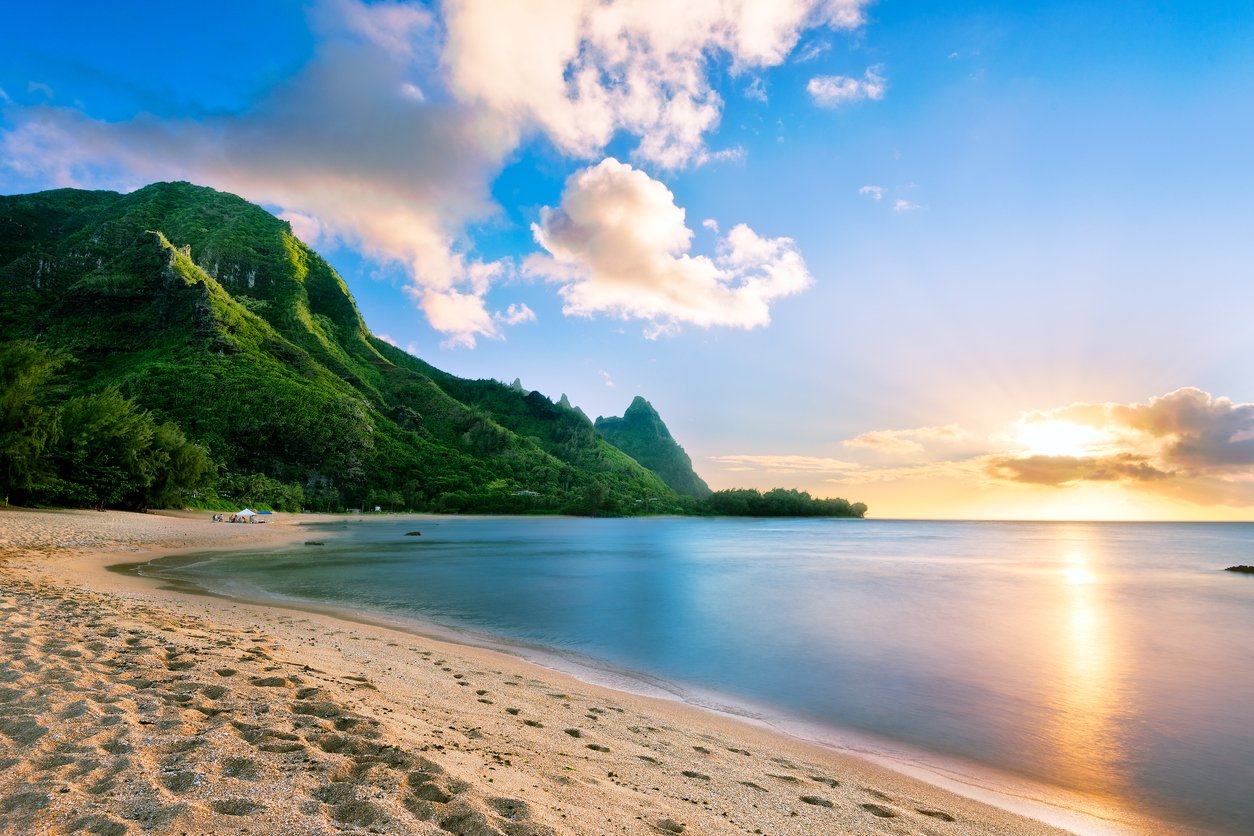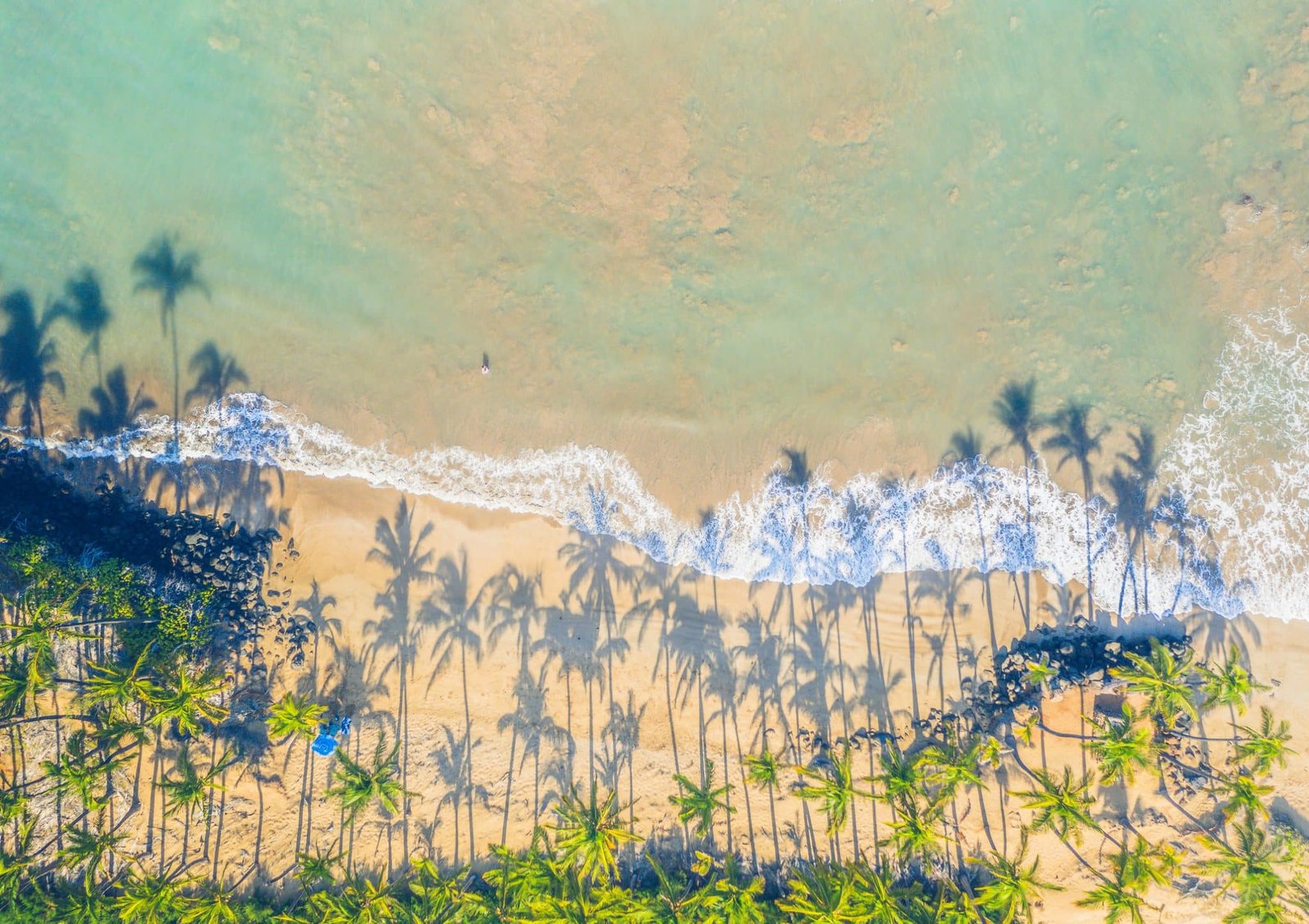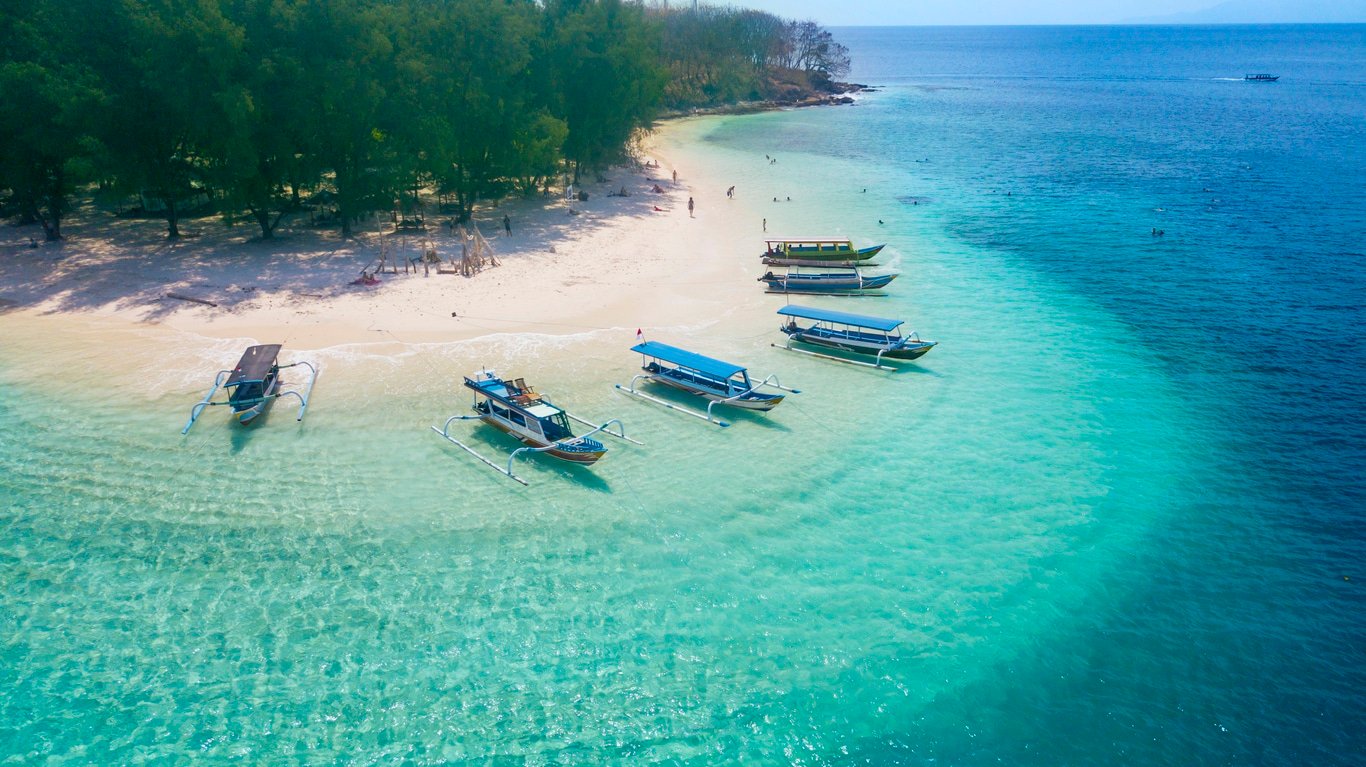Snowboarding & Skiing in Hawaii: Here’s How, Conditions & What to Expect
|
Prefer listening over reading? We got you covered!
Getting your Trinity Audio player ready...
|
Hawaii is renowned for its incredible views, lush forests, sparkling beaches, surfing opportunities, luxury resorts, and so much more. But one of the lesser-known marvels of Hawaii is that an adventurous person can actually ski down the side of a volcano during the winter!
Yes, the endless summer island also has skiing and snowboarding to offer during the right time of year. Mauna Kea is a dormant volcano that provides the best winter sports opportunities in the state. Including the opportunity to go snowboarding and skiing in Hawaii!
The translation of Mauna Kea – where you can do both activities – actually means “the white mountain,” and the conditions are not for the faint of heart.
This is adventure skiing at its finest, but it’s precarious. And ski clubs in Hawaii don’t ski or snowboard on the dormant volcano any longer.
That doesn’t mean it’s not possible though, as we show you right here. But there are controversies surrounding it, and the conditions are difficult.

The Location: Mauna Kea & Mauna Loa
Mauna Kea is one of the most famous mountains in Hawaii. This dormant volcano has a long and intertwined history with the inhabitants of the island for hundreds of years. And in Hawaiian culture, the island’s peaks are considered sacred.
With its peak 4207m above sea level, this dormant volcano is also one of the best sites globally for astronomy and has a huge observatory on top.
Both Mauna Loa and Mauna Kea have snowfall for skiing. However Mauna Kea is the better option because the observatory roads on the mountain make it easy to get to the summit.
Scientists believe Mauna Kea has progressed past the “shield building” stage, which means it has stopped erupting and building up its terrain with lava.
There is a possibility that Mauna Kea could erupt again, but there will be ample signs because of the volcano’s age, and it is unlikely to happen any time in the near future. That makes it a relatively safe volcano to spend time on.
Mauna Loa is a different story. It is possible to ski on Mauna Loa. But it is dangerous because the volcano is still “shield building.” It can erupt with little warning, and last did so as recently as 1984. Adventure skiing is already a risky affair, and adding an active volcano to the mix is not a good idea!
Mauna Kea, on the other hand, offers the best access roads, dormancy, and some very steep slopes that make for an excellent adventure ski.
Adventure Skiing in Hawaii
Skiing in Hawaii is not the same experience as skiing and snowboarding in Aspen. Both Mauna Kea and Mauna Loa get snowfall under the right conditions.
But while the likes of Aspen have impressive ski resorts, ski lifts, a wide array of equipment for hire, and offers a traditional skiing experience, there is no established infrastructure for any winter sports in Hawaii.
Winter sports are a unique experience in Hawaii. There is no resort in the mountains, no tramping around in snow boots, ski lifts, and enjoying hot chocolate around the fire in a snow-laden ski lodge.
No, skiing and snowboarding in Hawaii is a little more adventurous and exciting. You can ski in the frigid cold in the morning, and surf in Hawaii’s warm water in the afternoon that same day.
But the skiing conditions are more than a little hazardous and require knowledge and expertise to make it a memorable and enjoyable experience.

The Conditions
In Hawaii, skiing and snowboarding is for adrenaline lovers who are experts, not inexperienced or beginner skiers. The adrenaline rush can be exhilarating, but the conditions require skiers to be alert, athletic, and highly skilled.
There are roughly 100 square miles of skiable terrain at the top of Mauna Kea. And in that are 2500 to 4500 feet of vertical runs available for skiing, depending on the snowfall.
These runs are not for the faint of heart. They are unmarked and there are exposed rocks. The snow can end abruptly, and there is no lush greenery or grass at the end of the snow, only hard volcanic rock. Stopping can be treacherous, and avoiding the jagged terrain requires a lot of finesse and expertise.
The peak of Mauna Kea often experiences extreme and quick changing weather patterns. There are high winds because of the altitude, and if they are blowing from 25 to 100+ knots, you should not even consider driving up the mountain.
The sun is glaring at the top of the mountain too, so wearing sunblock and dark sunglasses is essential. The sun’s intensity can cause eye and skin damage, so being prepared is important.
As one would expect for Hawaii, the sun is brilliantly bright, but the altitude is equally as intense, if not more. Mauna Kea is 4207m above sea level and if you include the 5700m below sea level it’s actually taller than Mount Everest!
There is a rapid change in altitude driving up this mountain and it can affect the body considerably, causing altitude sickness.
As with most places with snow, the temperature can be frigid at the summit of Mauna Kea, ranging between -4 and +4 degrees Celsius. But the winds can make it feel much colder. The weather at the top can be pretty treacherous, and the conditions can change almost instantly.
One moment the sun can be shining and all is calm, and you are ready to enjoy the adventurous experience. In the next moment, the winds have turned, and it is unsafe to remain on the mountain, let alone ski down it.
It is imperative to wear suitable clothing to withstand the area’s cold, winds, and variable conditions, and be ready to change your plans if the weather is too dangerous.
Yet despite the often treacherous conditions, there is some of the best snow in the whole world on Mauna Kea. And if it’s possible and you have the expertise, then skiing in Hawaii is like no other experience on earth.
The Experience
There used to be a Mauna Kea Ski Resort, but it has since closed. Now, there are no officially organized or recognized ski trips, and ski clubs in Hawaii don’t ski or snowboard on the dormant volcano any longer.
If skiing in precarious conditions appeals to you, you will need to organize the trip yourself. As there is no ski lift, you will have to drive up the volcano, and the vehicle must be a 4×4 to handle the terrain to get to a spot suitable for a shot down the mountain.
However, there’s no doubt that a traditional ski resort just can’t compare to the rush of driving up a snow-laden mountain then shooting down the side into a lush paradise.
The slopes have an excellent angle for skiing and snowboarding, and it’s possible to do 2 to 3 runs in a day by ferrying people up, and a driver bringing the car back down to repeat.
Sometimes Hawaii can appear like a mythical island emerging from the ocean with its ranging and diverse scenery. When you ski from one of its highest peaks, you get to enjoy every aspect of it. It’s one hell of an experience and one-of-a-kind.
Skiing in Hawaii is not an immersive experience like staying in a lodge in Aspen. It is an adventurous day outing into extreme weather conditions to return to the lush lap of paradise below.
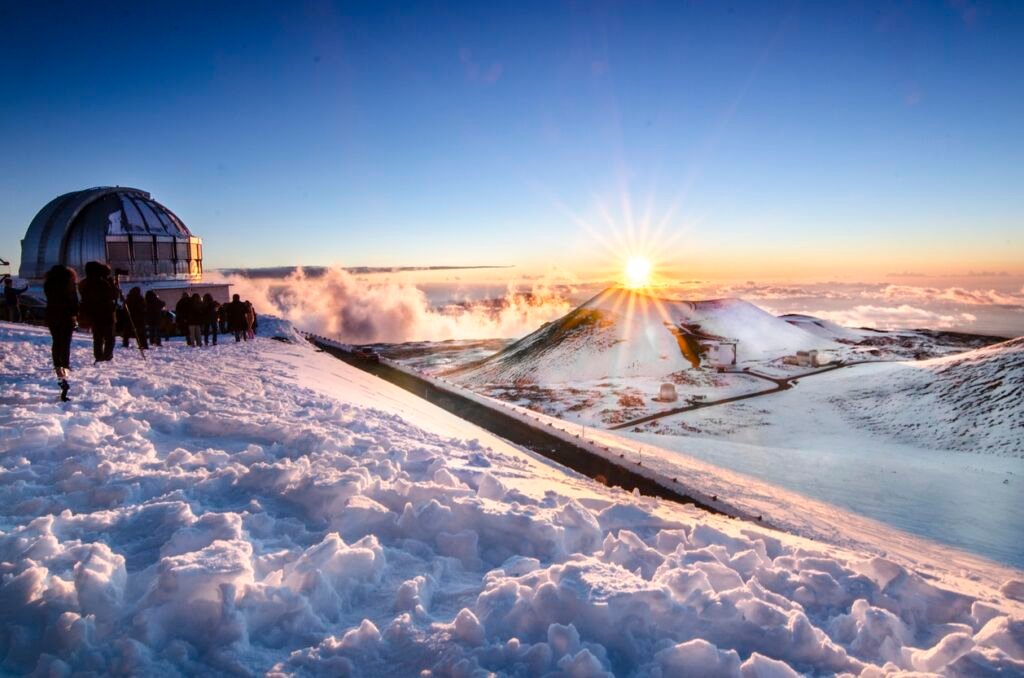
The Views
The conditions at the top of Mauna Kea may not be very friendly to humans. Still, they make for a very adventurous and unique experience if adrenaline-skiing appeals to you.
The sun is intense and can cause eye and skin damage, the lack of oxygen can cause altitude sickness, but the views are otherworldly. Hawaii seems to be one of those rare places in the world that has every bit of paradise on offer but all in one place.
Just picture it; you are at the top of a glacier-capped mountain, bundled up against the cold, ready to ski down the side of a snow-capped volcano.
But as you are heading down the slightly precarious mountainside, a breathtaking view unfolds before you.
There is a lush paradise, with the clearest blue water, sparkling beaches, and the richest greenery that nature has to offer in one of the most beautiful places in the world.
This is truly an unforgettable experience and one for the bucket list of any experienced skier who is adventurous and ready to take some risks for a big reward.
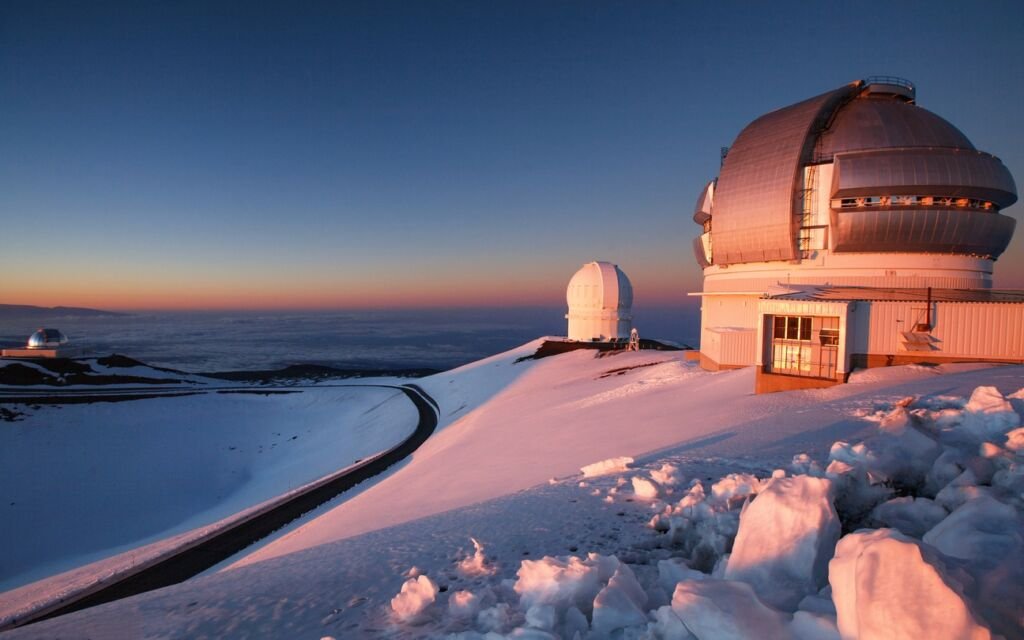
Safety & Skiing in Hawaii
You already know about the dangers regarding the altitude at the top of Mauna Kea, as well as weather conditions and terrain.
But if you are a scuba diver as well as a skier, you have to be aware of more possible dangers. The altitude difference between the peak and the water level below means that scuba diving is not a good idea as an activity for the following day. Wait a day or two after skiing before venturing into the water.
Planning a Skiing Trip to Hawaii
The best time to ski or snowboard on Mauna Kea is during the winter when there’s been fresh snowfall. The snow can sometimes get more than knee-deep in the right conditions.
If you do not live on the island, you will have to access a vehicle to navigate the terrain. Just be aware that not many rental companies will allow you, or want you, to drive the Saddle Road, which connects Mauna Loa and Mauna Kea.
You will also have to source your own ski gear. The conditions have to be just right for a trip up the mountain and you should be ready to go upon fresh snow falling. The snow will be best first thing in the morning before the sun turns it to slush.
It’s best to remember that skiing and snowboarding in Hawaii is not an official excursion. In fact, the skiing clubs in Hawaii don’t encourage anyone to run the slopes.
A few locals do make the most of the snow when it falls, and experienced skiers will enjoy the runs. But an excursion up the mountain is something every intrepid skier will have to plan and put into action themselves. It’s a good idea to take a local skiier who knows the mountain with you.

The History of Skiing in Hawaii
The first skiers who officially ventured up the volcano were a group of locals in 1936. There weren’t any cars that could carry them up the terrain, nor were there observatories in existence to provide an excellent route up the mountain.
So instead they ventured up the mountain on foot, camping along their way, and carried moving picture cameras to capture the incredible expedition.
Adventure skiing on Mauna Kea since has a rich history, with people like Jimmy Pfleuger, the automobile entrepreneur, pioneering the first jeep on the mountain. In the 1970s, Governor John A Burns proclaimed that there would be a “Ski Hawaii Week,” and in 1971, Olympic skier Susy Chaffee skied the mountain.
There is a fair amount of controversy around skiing on Mauna Kea in the present day. Locals still do it, but the Ski Club in Hawaii that used to organize runs up the mountain now actively discourages people from skiing on the volcanic slopes. That’s mainly to do with effects on the environment.
This doesn’t stop some in Hawaii from breaking out their winter gear and racing to get to the snow.
Many locals still enjoy a good run down the slopes, and the blizzard that passed over the peaks in December 2021 incited many locals to get to the top and play in the snow!
Snowboarding & Skiing in Hawaii: Our Final Thoughts
Skiing and snowboarding in Hawaii is for the adventurous. While there is no ski resort, patrols, or ski lifts, the snowy conditions on this island paradise can make for a fantastic winter sports experience that many avid skiiers have on their sporting bucket list.
It may take some planning and initiative, but skiing and snowboarding in Hawaii can be an incredible experience.


